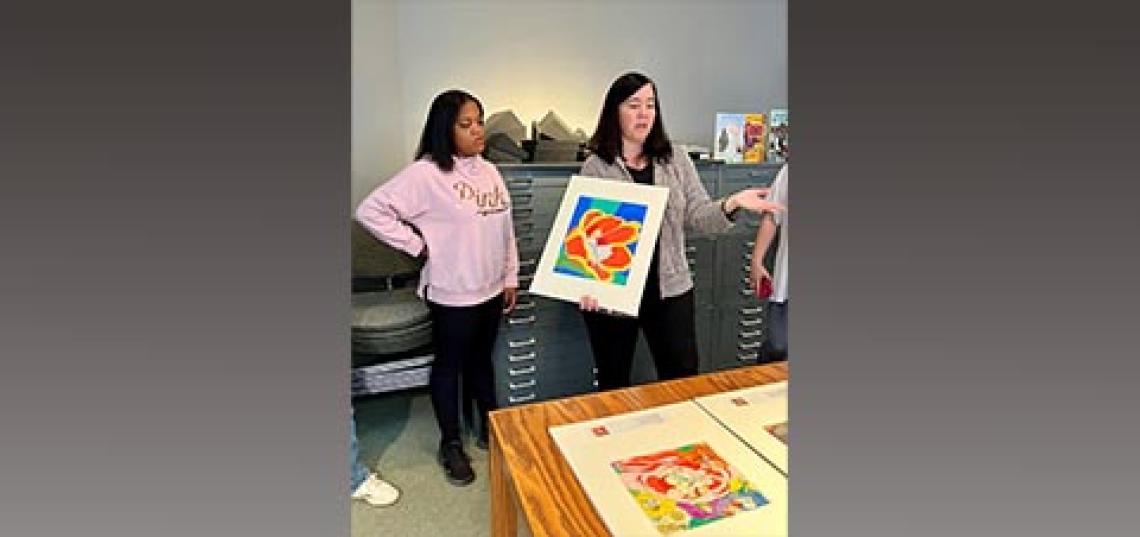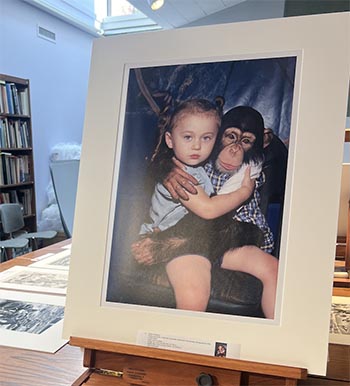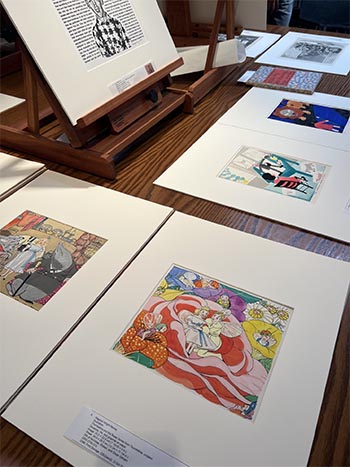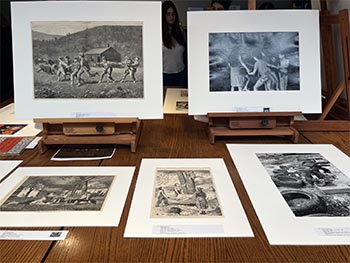
To highlight the importance of understanding the ways children are portrayed in art and literature, Chair and Distinguished Professor of Journalism and Media Studies Amy Jordan arranged for her Children and Media class to visit the Rutgers Zimmerli Art Museum, where curator Nicole Simpson, Ph.D., introduced them to a specifically arranged set of artworks that depict children and childhood, and a new exhibit showing the portrayal of disabilities in children’s literature.
The dozens of books in the exhibit, displayed at a height that children and people in wheelchairs could easily access, included one focused on a grandparents’ memory loss (“The Remember Balloons” by Jessie Oliveros) and a blind girl’s love for a seeing-eye dog.
The museum holds an impressive 4,000 illustrations of children in art and literature, and some of the images selected to be shown to Jordan’s class by curator Nicole Simpson were taken from Zimmerli’s storage.
 The collection for Jordan’s class was made up primarily of etchings, hand-painted images, and photographs dating from the 1920s to the 1980s.
The collection for Jordan’s class was made up primarily of etchings, hand-painted images, and photographs dating from the 1920s to the 1980s.
The class explored the question of what it means to be a child participant in art making and how photography can be manipulated, posed, reconstructed, and edited after the photo is taken.
The portrayals of children in the exhibit underscore the reality that in most cases children have no choice about being portrayed. “Children don't always have agency over people sharing their images. They don't always have the opportunity to say no,” Jordan said.
The artwork gathered was intended to explore the portrayal of childhood, a topic that Jordan is exploring with her students in the Children and Media class.
“Our notions of childhood are socially constructed and depending on your historical place and on what's going on in the society around you, different cultures think of children and childhood in different ways. At the Zimmerli, we saw the variety of ways that we can think about children. For example, we can glorify children through the games they play and through our nostalgia, or we can document the actual lived experiences of children who might be living in precarious conditions or living with fewer resources. I think that while seeing how children are displayed in art, whether through paintings, illustrations, or photography, it is really important to recognize that this concept of childhood is not monolithic. Children have lots of different dimensions to them, and we as adults see them in lots of different ways,” she said. 
The museum is also currently showing an exhibition of children’s picture books about children and disabilities, including forty books for and about people with disabilities. The book exhibition showcases stories and illustrations featuring three thematic sections: “Picturing Perspectives,” “Page-Turning Friendships,” and “Empowering Plots.” The Zimmerli gallery where this exhibition is being shown offers patrons art and drawing tools, an interactive artboard for children to display their artwork, and a pleasant environment for young visitors and families to engage in their own creation of art while enjoying the exhibit.
Jordan said one of the points she makes in the class is that children can be portrayed in art and literature as innocent, vulnerable, and in need of protection. “We talk about various policies that are in place to try to protect [children]. For example, having limits on the age at which they're supposed to be able to join social media. We can also see them as agents of the economy, as little people who have money to spend and who can be audiences and consumers. From that perspective, they can be exploited. The idea of parents using their children to express themselves, whether it's as a family influencer or an artist – it’s complicated. We as adults should do more to protect children and protect their spaces.”
Jordan noted that for her students, taking a class such as Children and Media is both fun and insightful, because collectively everyone has experienced childhood, but as individuals everyone has experienced childhood differently.
“Most of the students in the class are juniors and seniors who maybe didn't grow up with social media the same way children today are growing up with it. It gives them a different perspective,” Jordan said.
 Learn more about the Journalism and Media Studies major at the Rutgers School of Communication and Information on the website.
Learn more about the Journalism and Media Studies major at the Rutgers School of Communication and Information on the website.
Photo credits and captions: top to bottom: “Kayla Hebbon and Nicole Simpson with Art from Thumbelina,” photo by Amy Jordan; “Art from Robin Schwartz (Child and Monkey),” photo by Julia Friedman; “Art from Maginel Wright Barney,” photo by Julia Friedman; “Art from various artists (Winslow Homer, Helen Stummer)”; photo by Julia Friedman. All the art pictured are from the collections of, and used with permission from, the Zimmerli Art Museum, Rutgers University.
